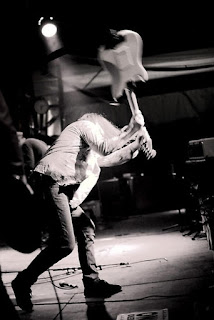↧
This Is How You Beat Bangalore Traffic !!! - Guitar Lessons / Classes Koramangala Bangalore
↧
Corporate Guitar Lessons - My School Of Rock
My School Of Rock -Corporate Guitar Classes
↧
↧
Music Production Course @ My School Of Rock
Modern Musician
Learn the art of music production process—
including composing, editing, mixing to create contemporary music on your computer.
With Digital Audio Workstation (DAW) ,music production is now available to the masses on their computer .
Albums are made in bedrooms as well as studios.Anyone can make an album for the low cost of a couple pieces of gear and
a software package.
But, if you dig deeper, you will find that it is not so easy. Producing music requires knowledge, dedication, and creativity.
Knowledge is where this course comes in. No matter what kind of music you are making, there is a large set of tools that you
will need to use.
Each lesson of this course will demonstrate a different set of music production tools.
Grade 1 - Drum Beats Production Techniques
By the end of this Grade , you will be able to:
identify the different components of a drumbeats used in popular music, including drums, cymbals, percussion, and electronic samples and loops.
apply the mechanics of playing real drums to writing realistic MIDI beats .
create drum beats using different types of MIDI controllers and techniques, including real-time and programmed beats .
compose drum patterns and fills that work well with the rest of the groove and support your song structure. identify common rhythms and tempos of popular music styles .
employ cutting edge production techniques to produce beats in a variety of styles .
mix drums for maximum punch and presence, using time-tested EQ, compression, and parallel effects techniques .
Grade 2 :Bass and Keyboard Production Techniques
By the end of this course, you will be able to:
identify the bass /Keyboard riffs used in popular music apply the mechanics of playing bass and keyboard to writing realistic MIDI tunes .
create bass/keyboard effects using different types of MIDI controllers and techniques .
compose bass /keyboard riffs and fills that work well with the rest of the groove and support your song structure.
identify common rhythms and tempos of popular music styles employ cutting edge production techniques to produce bass/keyboard riffs in a variety of styles .
mix bass/keyboard for maximum punch and presence, using time-tested EQ, compression, and parallel
effects techniques .
Grade 3 : Mixing and Editing TechniquesBy the end of this course, you will be able to:
Perform Mixing for Recorded Vocals,Guitar, Drums,Bass and Keyboard .
Perform Editing using Tools such as volume, pan, mute, solo, busses, inserts, sends, and submixes.
Sound Processing using compression, equalization, and delay, and examine the many audio effects.
Explore the synthesizer, a major tool within the production of contemporary music .
↧
Music Production Session @ My School Of Rock
↧
Voice Culturing Workshop @ My School Of Rock
↧
↧
Music Is Freedom
↧
Song Writing - Guitar Classes - Music Lessons - Koramangala Bangalore
Most people approach songwriting in the same general way. For those that write music, versus lyric writing only, that process is to go to their instrument and improvise until they stumble upon something that sounds good. They choose to focus only on the goal of having a completed song instead of focusing on the wide range of available processes to compose music. In other words, these people focus on the what (the song they want to write) instead of the how (which processes and methods can be used). Once the decision is made to write a new song, they begin with the one process that is easiest and comes most naturally to them - improvising at their instrument. For the purpose of illustrating the examples below, let us assume your main instrument is electric guitar. Natural pros and cons inherently exist with every songwriting process and method. Here is the obvious set of pros and cons for the process of improvising with your instrument:
· This is the easiest songwriting process for most songwriters.
· You can begin immediately (without little or no pre-compositional planning or thought).
· You can take advantage of the guitar's natural possibilities of tone, playability, pitch range, the number of pitches that can be played simultaneously, dynamic range, articulation, etc.
· If you are a competent guitar player, you can easily create music that is natural for the guitar. You probably have at least a basic command of general guitar, so playing your guitaristic ideas won't be a major problem in most cases.
· Because most songwriters (even many pros) write in this way, your musical results may be similar to some of those that have gone before you and written successful hit songs.
This Method's Disadvantages
· You are limited by the instruments limitations of tone, playability, pitch range, the number of pitches that can be played simultaneously, dynamic range, articulation, etc.
· You are likely to repeat similar ideas that you have used before in other songwriting sessions.
· It is easy to fall into the trap of thinking like a guitar player only versus a songwriting musician.
· You may discover your hands are doing most of the creating, not your true creative mind.
· The range of possible musical results is limited when using this single process exclusively. Not necessarily because there is anything wrong with the guitar or you. Any single songwriting process will be limiting. You must really work hard to squeeze as much out of a single process as possible. Of course having multiple processes is better than having only one (I will discuss other methods of writing songs in future articles). Go to your instrument and begin improvising, notice what types of things you do naturally. What is the process that you usually start with? Do you begin by trying to write a melody? Or do you begin with chords? Here is a list of ideas you can use to begin.
· Begin with Melody first. 01. In this case, decide if the melody you are trying to write will be a vocal or instrumental melody. This is very important because vocal melodies need to have room for a singer to breathe and you must also consider the pitch range - a singer's pitch range is more narrow than most instruments. Keep this all in mind when writing melodies. 02.Consider the melodic contour (shape and direction) of your melodies. 03.Is there a clear climax (high point)? Where should it be in the melody?
· Begin with Chords first 01. Choose a tonal center (key) to begin with. You don't have to stay in that key for the entire song, but it is wise to at least begin in a single key. You can deviate from the key later if you wish. 02. Think about the progression of chords, where are there moments of tension and resolution? Are these moments placed in the best order?
· Begin with Chords and Melody at the same time. 01. I like this one a lot. Begin with a single chord and a melody note or phrase, as you add on the next chord and more melodic notes, write them together. Experiment by changing the chord but not the melodic phrase. Experiment by changing the melodic phrase but not the chord.
· Begin with Rhythm first 01. Consider the types of rhythmic patterns that you normally use. Perhaps one of them is exactly what you need to get into the grove of a new song. 02. Experiment with variations on your favorite rhythmic patterns. Take a common pattern and play it backwards. 03.Create something totally new. Force yourself to disallow any of your favorite rhythmic patterns to creep into your new song idea. Dynamics, Texture and Form are the most often overlooked musical elements among songwriters. Record companies hire producers to improve the quality of the songwriting done by the writers. Most producers have to spend a lot of their time (and the artist's advance money!) shaping the songs in these three areas because songwriters often neglect to spend enough time and effort on them. Most people can write a melody and put chords together, but struggle with dynamics, texture and form.
· Begin with Dynamics first 01. If you are thinking about dynamics while composing each part of the song, you are already ahead of the game. 02.Plan out what the dynamic range of each section of your new song will be. Which parts will be louder and which will be softer? How can you create smooth transitions between them? Do you want smooth transitions?
· Begin with Timbre first 01. The variety of instruments you use, and the sounds you get out of those instruments brings color to you music. Once you have written a melody, experiment with how many different types of tone qualities you can use to play it. Even if you are only writing a song for a solo instrument, how can you color the sound with that instrument? For example, on a guitar, playing down by the bridge produces a totally different sound quality than picking over the center of the string (12th fret).
· Begin with Texture first 01. The density of sound and timbre may influence the types of melodies you compose. Consider how the density of texture may change from section to section. What type of musical effect will result? A single guitar line might lead you to write guitaristic lines, but if you use a guitar to compose a keyboard part, your approach will often be (and probably should be) quite different.
· Begin with Form first 01. Starting here can do wonders to keep you out of trouble (musically speaking). When you don't think about the form (arrangement of the parts of a song) early on in the writing process, it is easy to paint yourself in a corner later. When you have written various parts for a song but can't seem to piece the individual parts together in a cohesive manner this usually happens because there was little or no thought about form early on in the writing process.
↧
Chords - Guitar Classes and Music Lessons Koramangala Bangalore
Chords You Need To Know !!
Major Chords
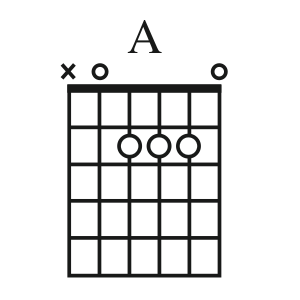
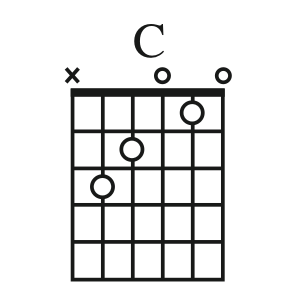
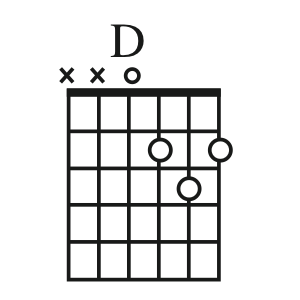
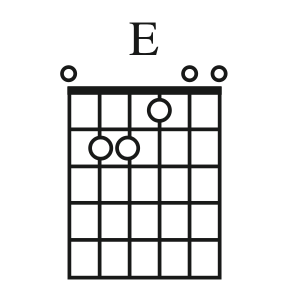
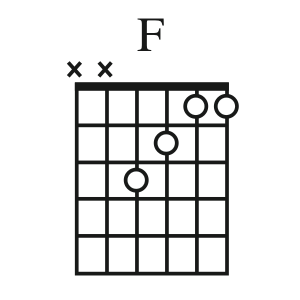
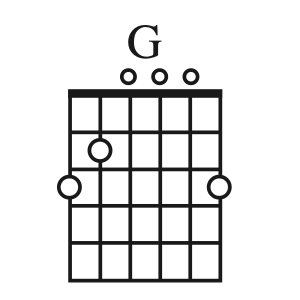
Minor Chords
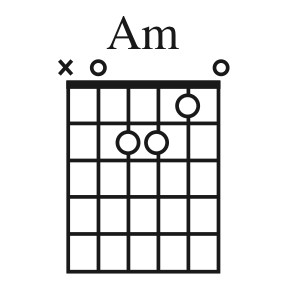
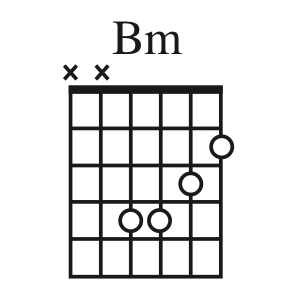
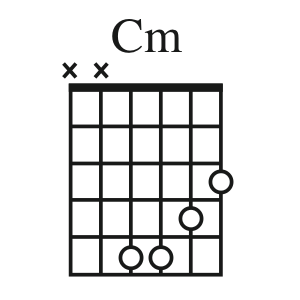
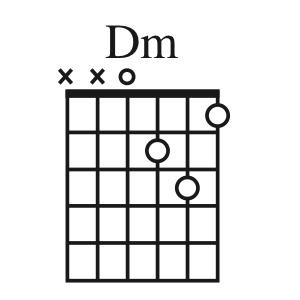
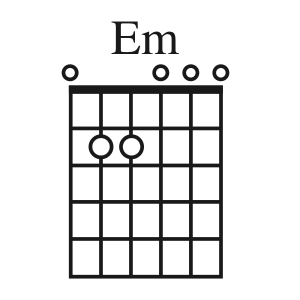
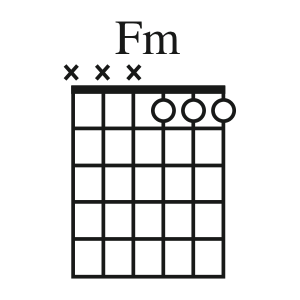
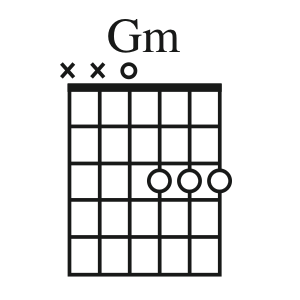
Seventh Chords
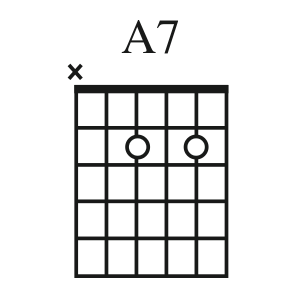
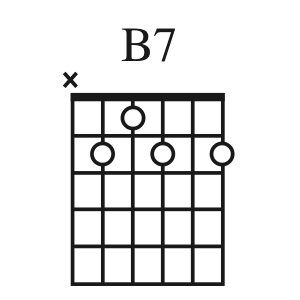
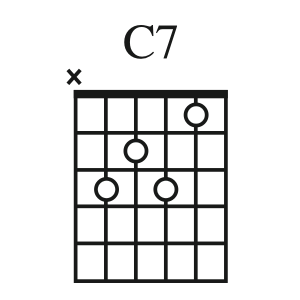
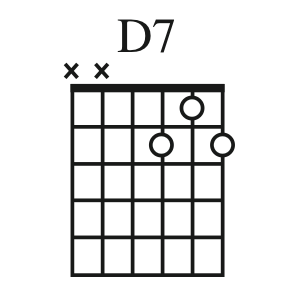
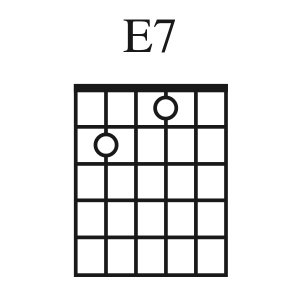
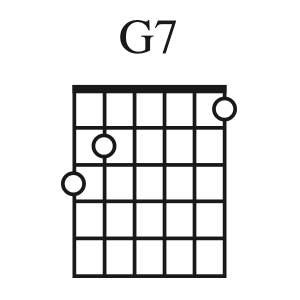
Minor Seventh Chords
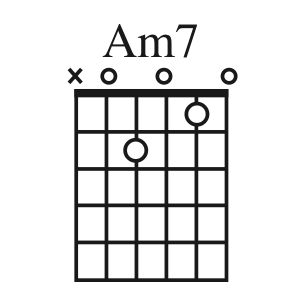
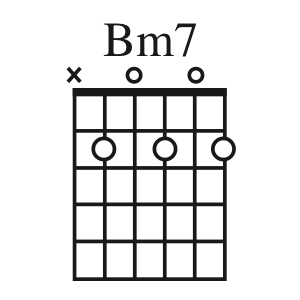
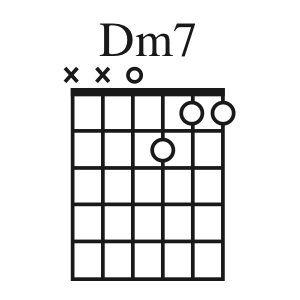
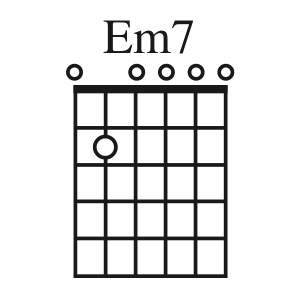
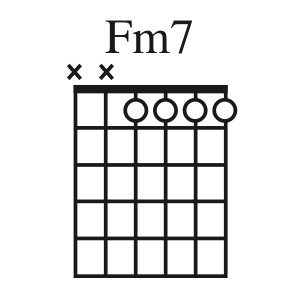
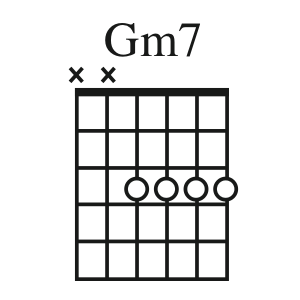
Major Seventh Chords
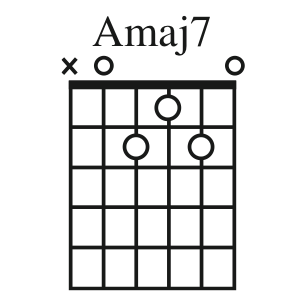
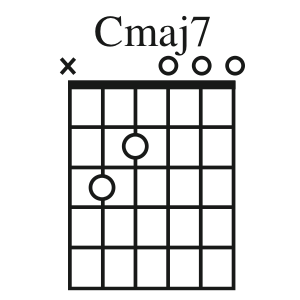
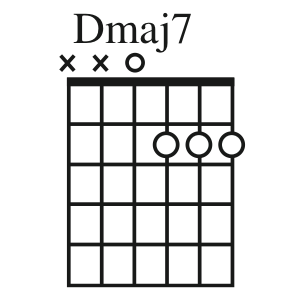
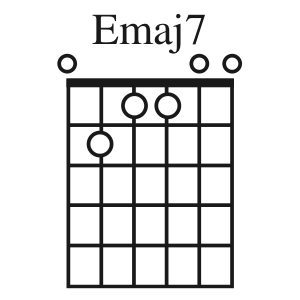
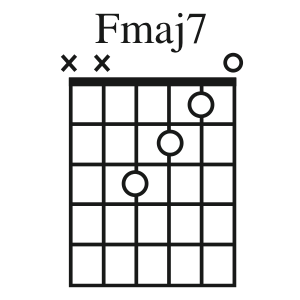
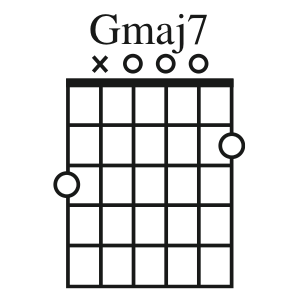
Suspended Four Chords
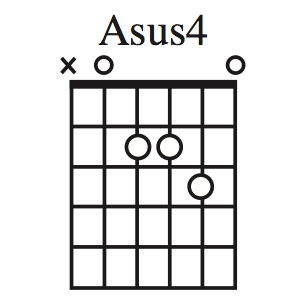
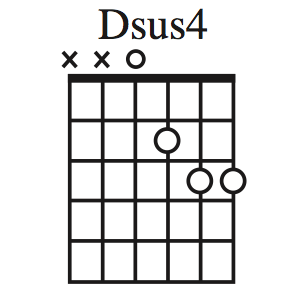
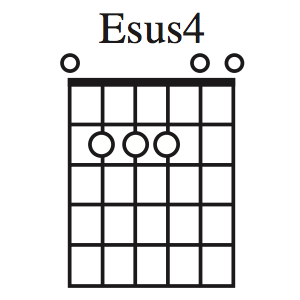
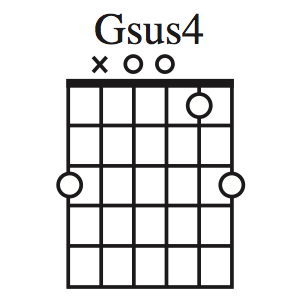
Suspended Two Chords
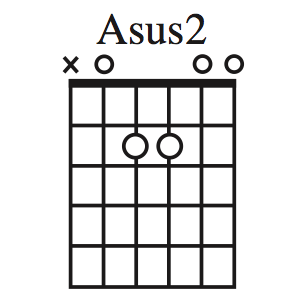
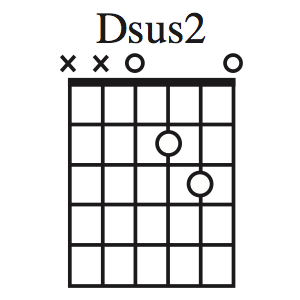
Add 9 Chords
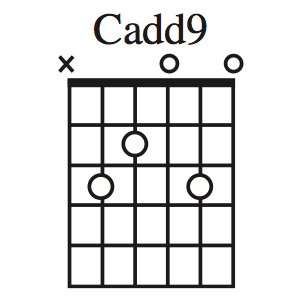
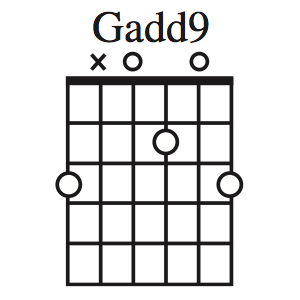
↧
Why Do People Given Up While learning to play the Guitar?
Why do people not enjoy learning to play guitar enough to keep at it?
Here are some of the more typical answers to these questions. People often say that they:
I'll say it simply - people quit because they're not having enough fun with it. The fact is, learning a musical instrument should be fun! And that, taking the correct approach is what will make or break the fun factor.
When thinking about having fun playing guitar, one of the first thoughts that comes to mind for many people, is that of impressing others who hear and see you play. This may seem vain, but let's be real. 95% of us feel this way. And it's perfectly healthy, as long as you have a reasonable grip on reality.
Close behind this or perhaps at the same time are the cool vibes, excitement or even euphoria we experience with certain pieces of music while listening, but then to be playing it? Wow! Even just to play this music alone with no one listening may be fantastic already, but then to be able to share it with an audience, to do it really well, and be the envy of your peers? Wow and double wow! Seriously.
But the fun doesn't end there. And most importantly, it doesn't start there.
Whether it be status, recognition, attracting people to you, or the pleasure, excitement, euphoria, some or all of these things together, these things are products of you being able to play your instrument.
The other fun that I want to tell you about is a different kind of fun. This kind of fun is more crucial to your enjoyment, and continued success in learning to play.
It is the fun of learning how to do something we didn't know how to do before. I'm not just talking about the sense of accomplishment. The sense of accomplishment is another product of your being able to learn to play.
It is the fun of discovering exactly what needs to happen in order to learn a particular skill and making it happen. In most cases, if we have made a satisfactory effort in developing decent understanding of what it is we're attempting to accomplish, then we have 95% of the job in hand. It is the other 5% of the job that we are not able to figure out yet.
Now here's a sweet idea: learning just what that 5% is, is often enough to get it done! In many cases this is all that is required! Just finding out what it is! And there it is - 100%!
Now this may or may not mean you are now ready to go play rock star and feel the magic glow. However in any event, you are now ready to go to the next level in your learning and developing of this particular item or skill.
In many other cases of course, this 5% may require more than simply identifying the problem area. And here is where our problem solving skills are put to use and given a chance to grow, to build strength, stamina, focus, patience, persistence. This is it people!
This is the real fun. The serious fun. The confident fun. The most useful fun. The skill that we need in order to truly succeed in life! Not just in music, but in all areas of life.
And this is why learning to play music is so good for people. Once we have experienced this on a deeper emotional level then we can naturally feel this way when trying to overcome other challenges that face us. The payoffs are huge. When you apply your problem solving skills in other areas of life the same as you do with music, you are unstoppable!
It was more commonly said in the past that music is simply part of a good education. Why? Because it's true!
Is there something else you can do to grow your brain, and develop your life skills that gives you as much personal pleasure as music? And that gives all those other fantastic products of being able to play? Is there?
Now why do so, so many people not have enough fun when learning to play an instrument? Is it their own fault? Very rarely.
In the vast majority of cases, it is simply the teacher's fault. Fault may be a harsh word. "Shortcomings" may sound more reasonable. It's not realistic on your part to expect every teacher to posses the needed skills to make your experience fun.
This is why you need to find not only a good teacher, but the best teacher you can find. A teacher who understands you, your personality, your learning style, your goals, your aspirations. If your goals and aspirations are not clear, then it is just as important that the teacher help you to start developing your sense of what you truly want to accomplish.
Once you have found this teacher and established a good student/teacher relationship, you will be willing and able to do whatever they instruct you to do in order to achieve your goals. You will then be achieving them. You will then be... having fun!
Here are some of the more typical answers to these questions. People often say that they:
- don't have the talent;
- just too busy;
- don't have the necessary drive or desire;
- know they have to stick with it, but it's just too hard;
- it turns out it's just "not my thing."
I'll say it simply - people quit because they're not having enough fun with it. The fact is, learning a musical instrument should be fun! And that, taking the correct approach is what will make or break the fun factor.
When thinking about having fun playing guitar, one of the first thoughts that comes to mind for many people, is that of impressing others who hear and see you play. This may seem vain, but let's be real. 95% of us feel this way. And it's perfectly healthy, as long as you have a reasonable grip on reality.
Close behind this or perhaps at the same time are the cool vibes, excitement or even euphoria we experience with certain pieces of music while listening, but then to be playing it? Wow! Even just to play this music alone with no one listening may be fantastic already, but then to be able to share it with an audience, to do it really well, and be the envy of your peers? Wow and double wow! Seriously.
But the fun doesn't end there. And most importantly, it doesn't start there.
Whether it be status, recognition, attracting people to you, or the pleasure, excitement, euphoria, some or all of these things together, these things are products of you being able to play your instrument.
The other fun that I want to tell you about is a different kind of fun. This kind of fun is more crucial to your enjoyment, and continued success in learning to play.
It is the fun of learning how to do something we didn't know how to do before. I'm not just talking about the sense of accomplishment. The sense of accomplishment is another product of your being able to learn to play.
It is the fun of discovering exactly what needs to happen in order to learn a particular skill and making it happen. In most cases, if we have made a satisfactory effort in developing decent understanding of what it is we're attempting to accomplish, then we have 95% of the job in hand. It is the other 5% of the job that we are not able to figure out yet.
Now here's a sweet idea: learning just what that 5% is, is often enough to get it done! In many cases this is all that is required! Just finding out what it is! And there it is - 100%!
Now this may or may not mean you are now ready to go play rock star and feel the magic glow. However in any event, you are now ready to go to the next level in your learning and developing of this particular item or skill.
In many other cases of course, this 5% may require more than simply identifying the problem area. And here is where our problem solving skills are put to use and given a chance to grow, to build strength, stamina, focus, patience, persistence. This is it people!
This is the real fun. The serious fun. The confident fun. The most useful fun. The skill that we need in order to truly succeed in life! Not just in music, but in all areas of life.
And this is why learning to play music is so good for people. Once we have experienced this on a deeper emotional level then we can naturally feel this way when trying to overcome other challenges that face us. The payoffs are huge. When you apply your problem solving skills in other areas of life the same as you do with music, you are unstoppable!
It was more commonly said in the past that music is simply part of a good education. Why? Because it's true!
Is there something else you can do to grow your brain, and develop your life skills that gives you as much personal pleasure as music? And that gives all those other fantastic products of being able to play? Is there?
Now why do so, so many people not have enough fun when learning to play an instrument? Is it their own fault? Very rarely.
In the vast majority of cases, it is simply the teacher's fault. Fault may be a harsh word. "Shortcomings" may sound more reasonable. It's not realistic on your part to expect every teacher to posses the needed skills to make your experience fun.
This is why you need to find not only a good teacher, but the best teacher you can find. A teacher who understands you, your personality, your learning style, your goals, your aspirations. If your goals and aspirations are not clear, then it is just as important that the teacher help you to start developing your sense of what you truly want to accomplish.
Once you have found this teacher and established a good student/teacher relationship, you will be willing and able to do whatever they instruct you to do in order to achieve your goals. You will then be achieving them. You will then be... having fun!
↧
↧
Music Theory - Guitar Koramangala Bangalore
There are essentially two things you need to understand in order to become highly creative and express emotions in music:
- You have to understand the manner in which great guitar players and musicians ‘think’. More specifically, this means determining WHY they choose the specific notes and musical ideas that they do. This is something that you cannot learn if you simply copy the “notes” of your favorite songs and guitar solos. Rather than just playing the same notes as other musicians, you must spend time thinking about the musical emotions you want to express, and what specific musical choices you need to make to achieve that goal. Once you gain this level of musical creativity, you will develop your own unique sound as it relates to the ideas and emotions that come from your mind.
- You must know how specific musical emotions can be created and expressed by making certain musical choices while composing music or playing a guitar solo. Additionally, you need to be able to make your audience understand exactly what emotions you want to express with your music, without having to say a single word. Many guitarists struggle greatly with doing this and as a result they end up limited to only playing the music of others without ever really expressing themselves through their guitar playing.
If you want to truly master musical creativity, you will need to learn how to use music theory. Unfortunately, most guitar players have one of two misconceptions about what music theory IS. Some people stay away from theory because they believe it contains unbreakable “rules” that will limit their freedom of musical expression. Other guitar players think that the purpose of music theory is only to learn abstract ideas about all the nuts and bolts that make up music.
The truth is, music theory is neither of these things. Music theory is the idea of connecting one’s thoughts, feelings, and emotions together through musical expression. It is the ability to explain WHY we feel emotions in music, and how we can continue to use musical creativity to recreate our emotions.
Here are the most important skills you will get from learning music theory:
- Music theory will help you understand exactly why you feel the way you do when you listen to any given piece of music. The best part is that you will then be able to use this knowledge in your own musical expression to make much higher quality music.
- You will no longer have to waste time trying to find the “right notes” when making your own music. You will be able to quickly identify the exact musical elements needed to express your emotions in music. This will put your level of musical creativity far ahead of most guitarists and musicians who simply play around on their instrument until something sounds interesting.
- Music theory gives you all the equipment you need to put together new musical ideas much more quickly, without having to rely on remembering the way something sounds. Having the ability to associate specific feelings and emotions with the musical tools needed to express them allows you to compose and organize entire sections of your music on paper (or by ear) before even playing any notes.
- When you understand exactly which musical choices to make in order to accurately convey a certain musical emotion, you will be able to anticipate how people will interpret your music.
↧
Top 5 Tips For Guitarists - Guitar Classes/Lessons Koramangala Bangalore
| Top 5 Tips For Guitarists |
1) Only play what you want to play
“Don’t judge yourself while playing. This is something that came from Lennie Tristano. His idea was that if you’re constantly saying to yourself things like, ‘Oh, that’s no good. I should have played the F instead of the F#,' you’re never really living in the moment; you’re not improvising fully and expressing yourself and embracing the idea that music is an art form.
2) Never play with pain
“This is extremely important. If you’re whipping out that metronome every day and you’re playing two- and three-octave scales up and down the neck, at some point if you go, ‘Ow! My wrist hurts,’ then you should stop.
3) Learn something new each month
“This is an easygoing yet difficult parameter to maintain for practicing. It’s easy, of course, to play something that somebody taught you 10 years ago and to practice it over and over. Every time you play it well, it’s like you’re patting yourself on the back.
4) Experience imitating other players
“The long way of saying this is ‘Experience imitating other players and develop an opinion of what you like and don’t like, and then build your sound and style.’ That’s a mouthful, so let’s break it down.
5) Listen to music like a music lover, not like a player
“One of the things that can skew the development of a point of view about somebody’s artistic statements is when you forget that the people who listen to music aren’t playing it. It’s easy to get so caught up in the details of something that you lose the forest for the trees.
↧
Things You Can and Can't Learn From Online Guitar Lessons - Music Lessons Bangalore
It has never been easier to find guitar lessons online. There are thousands, and new lessons are added every day. There are also countless tabs and song guides. But students who learn guitar online often struggle with some "missing pieces" in their musical learning. That's because these pieces are most often learned from playing with more experienced musicians, or from a teacher. And although anyone can find guitar lessons online, not everybody has access to experienced musicians.
Last year, we set out to create a new online guitar learning site. We wanted to find out what was currently missing out there in the "lessonscape" and fill in some gaps.
Guitar players who primarily learn online often report at least one of these issues:
Challenges With Online Lessons
Lack of clear structure. The lesson landscape was full of learning examples, but guidance for navigating through this landscape was lacking. Because each student learns at a different pace, is interested in learning different materials, and has a different overall level of ability, it's impossible to give the same practice plan to every student.
Lack of feedback. Learners reported that, without a teacher, they weren't sure if what they were doing was correct. Most were aware that their guitar habits might be formed over many years, and were wary of spending so much time building "bad" habits.
So there are benefits to having a private teacher, especially if you find one that can offer you these missing pieces.
But you can definitely learn a lot by yourself if you're committed. And no matter what resources you have available, the most important thing is what you practice, how you practice, and how often you practice.
What Is the Internet Best at Teaching? Studying on the Internet can be an important part of learning-central, even. Here are some of the things the Internet is best at providing:
Limitless songs. Although you have to be careful when learning tabs to make sure that you're getting accurate information, no teacher has a library of songs that matches the number found on the Internet. Most teachers will gladly use tabs and charts printed from online, so long as they appear to be accurate.
Guitar Fretboard Knowledge. Diagrams of chords, scales and arpeggios are plentiful.
Techniques and tricks. No one teacher is familiar with the techniques and tricks used in every style. Thankfully you can find passable demonstrations of almost every technique somewhere out there.
Why You Should Consider Guitar Lessons Using the web, you can usually find WHAT you want to learn, and hopefully you can also teach yourself HOW to play it. But playing with other musicians and learning from a teacher are useful in helping you understand WHY. And that's an important step in deconstructing what you're doing, setting your priorities, and deciding what you need to work on during today's practice.
Music Lessons Bangalore | Music Lessons Koramangala |Guitar Lessons Bangalore |Guitar Lessons Koramangala |My School Of Rock
Last year, we set out to create a new online guitar learning site. We wanted to find out what was currently missing out there in the "lessonscape" and fill in some gaps.
Guitar players who primarily learn online often report at least one of these issues:
Challenges With Online Lessons
Lack of clear structure. The lesson landscape was full of learning examples, but guidance for navigating through this landscape was lacking. Because each student learns at a different pace, is interested in learning different materials, and has a different overall level of ability, it's impossible to give the same practice plan to every student.
Lack of feedback. Learners reported that, without a teacher, they weren't sure if what they were doing was correct. Most were aware that their guitar habits might be formed over many years, and were wary of spending so much time building "bad" habits.
So there are benefits to having a private teacher, especially if you find one that can offer you these missing pieces.
But you can definitely learn a lot by yourself if you're committed. And no matter what resources you have available, the most important thing is what you practice, how you practice, and how often you practice.
What Is the Internet Best at Teaching? Studying on the Internet can be an important part of learning-central, even. Here are some of the things the Internet is best at providing:
Limitless songs. Although you have to be careful when learning tabs to make sure that you're getting accurate information, no teacher has a library of songs that matches the number found on the Internet. Most teachers will gladly use tabs and charts printed from online, so long as they appear to be accurate.
Guitar Fretboard Knowledge. Diagrams of chords, scales and arpeggios are plentiful.
Techniques and tricks. No one teacher is familiar with the techniques and tricks used in every style. Thankfully you can find passable demonstrations of almost every technique somewhere out there.
Why You Should Consider Guitar Lessons Using the web, you can usually find WHAT you want to learn, and hopefully you can also teach yourself HOW to play it. But playing with other musicians and learning from a teacher are useful in helping you understand WHY. And that's an important step in deconstructing what you're doing, setting your priorities, and deciding what you need to work on during today's practice.
Music Lessons Bangalore | Music Lessons Koramangala |Guitar Lessons Bangalore |Guitar Lessons Koramangala |My School Of Rock
↧
Best Way To Learn Guitar - Guitar Music Lessons |Guitar Music Classes |Koramangala |Bangalore
Learning guitar can seem daunting. With all the different websites and teaching methods available it can be difficult choosing where to begin. . The answers to most common questions are featured here.
Is there an easy way to learn barre chords?
Whenever I teach barre chords to a student, I tell them before hand that they are going to be hard to learn. They are like riding a bike, though. Once you get them, you’ll never forget them. No capo in the world can do what the barre chords do for music. If you look at your index finger, it has a slight bend to it. This leaves the center of the barre hard to press down. Now rotate the finger ever so slightly backwards so the knuckle is facing toward the nut of the guitar. This flattens the finger. Sure it still has a bend to it, but it is no longer a factor because the side of the finger, which is now flattened against the fretboard, is holding down the strings.
Time is one of those things that we approach differently depending what we want to do with it. We find that we make time for things when we need to or want to but don’t always see where that time comes from.
Time adds up. Even if you manage to find fifteen or thirty minutes a day, it adds up. And if you’re honest with yourself, you’ll FIND that time and then MAKE it your guitar time.
Buy a guitar stand. When I first started playing, it seemed like a lot of work to take the guitar from the case, make sure it’s tuned then make bad sounds. Then I bought a guitar stand and placed the guitar in my living room. It serves as a monument to remind me that I am not playing the guitar with the 15 minutes I’m wasting on the couch. It catches my eye when I’m surfing the channels and says “play me instead”. The instant access of the guitar allows me to get that 10 or 15 minutes in (which often turns into an hour) while I’m waiting for something else. Also, you have to practice your chords and chord changes until you master the skill. However, learn some 2 chord songs (G7 and C) or simple 3 chord songs so that you can have some feeling of accomplishment while learning. You can make “music” with these simple sings and see your progress.
I'm new to the guitar. Where should I start out?
The greatest learning you can get is from a teacher. One on one lessons really allow you to grasp the concepts of learning at a faster rate and allow you to understand more effectively. If you are low on money and can’t afford a teacher then the internet is the next best thing. This, though, is going to mean that you will be learning ‘on your own’.Which chords should I begin learning?
For someone starting out, the inability to get a full sounding chord can lead to much frustration which, in turn, can lead to deciding that maybe the guitar is just too much trouble and not worth learning. For younger students, and also for some adults, the confidence gained by playing some single notes on various strings is all they need to make the next “step” into chord playing. I’d like to make a quick point that learning chords is not always the best way to start out, particularly for younger children.Is there an easy way to learn barre chords?
Whenever I teach barre chords to a student, I tell them before hand that they are going to be hard to learn. They are like riding a bike, though. Once you get them, you’ll never forget them. No capo in the world can do what the barre chords do for music. If you look at your index finger, it has a slight bend to it. This leaves the center of the barre hard to press down. Now rotate the finger ever so slightly backwards so the knuckle is facing toward the nut of the guitar. This flattens the finger. Sure it still has a bend to it, but it is no longer a factor because the side of the finger, which is now flattened against the fretboard, is holding down the strings.
- The other factor to remember is that we have been used to grabbing things with our hands and curling the fingers inward toward the palm. Now, with barre chords, we have to develop muscles we almost never use to flatten out the finger. As with all muscles, it takes time for strength and size to come about. Even though the technique may be perfect, you may have to keep at it and wait it out for these reasons. But it will come to you.
The last thing I want to say about this is this, look at the barre chord. Are there other fingers doing work in the center of the fretboard? If so then you don’t have to concentrate you barring efforts behind them. Watch what you are doing and what is needed.
- Whenever someone asks “how much time,” a teacher is going to respond “as much time as you can.” That’s almost a pure reaction. The reality, however, relies on two separate things: the amount of free time you truly have and the physical condition of your hands.What pitfalls should I avoid as a beginning student?How do I get the most out of my practice time?If you know some chords and where the notes are on the fingerboard, then you have to ask yourself, what you want to do? You already know enough to strum a lot of songs and even play song simple leads and riffs. You also know enough to start writing and playing some of your own songs. So there are a lot of choices and it’s really up to you.
I know that this may not be the answer that you seek, but without knowing what your purpose for playing is, I truly can’t tell you what to play next. I can tell you that there are TONS of things to learn! Take some time and think about what you want to do.
ld I learn to play on acoustic or electric?There are a lot of similarities between the electric and acoustic guitar; they each have advantages and disadvantages to the beginner. It is easier to learn to finger pick on an acoustic. Barre chords and power chords are easier to learn on an electric. Because of the nature of the acoustic guitar, most people learn how to strum them but rarely take the time to explore the many styles and sounds that it is capable of. Because of the nature of the electric guitar, many beginners learn power chords and then little else. And when the acoustic player gets his first electric, he tends to play it like an acoustic. And vice versa.
Which is “better?” If you say right off the bat that you want to learn electric, I would tell you that electric is better for you. Is this necessarily true? No. But since this is where your interests currently lie, it is true for you.
What you learn from the guitar, or anything, is usually a combination of what you want and whether or not what you discover on the way interests you enough to take a detour. If you really want to learn a riff or a solo and you learn it, will you also take the time to figure out how you can use what you learn in another song or in a different style? Only if it interests you to do so.
It used to be that people started out with acoustic guitars mostly because it was expensive to get an electric guitar (and an amplifier and everything else that you’d need). That is not the case these days. If you want to play electric and you can get yourself a good set up, then by all means do so.
Because here’s the fun thing – if you choose the electric guitar now, there’s no reason why you won’t find yourself with an acoustic guitar somewhere down the road. I’d almost guarantee that this will happen. - Impatience. Perhaps this is a bit of my trying to lump a lot of stuff into a small and neat package, but I think that it is impatience, however it might be disguised, is at the root of a lot of frustration, for guitarists and many other people as well.
Time is one of those things that we approach differently depending what we want to do with it. We find that we make time for things when we need to or want to but don’t always see where that time comes from.
Time adds up. Even if you manage to find fifteen or thirty minutes a day, it adds up. And if you’re honest with yourself, you’ll FIND that time and then MAKE it your guitar time.
Buy a guitar stand. When I first started playing, it seemed like a lot of work to take the guitar from the case, make sure it’s tuned then make bad sounds. Then I bought a guitar stand and placed the guitar in my living room. It serves as a monument to remind me that I am not playing the guitar with the 15 minutes I’m wasting on the couch. It catches my eye when I’m surfing the channels and says “play me instead”. The instant access of the guitar allows me to get that 10 or 15 minutes in (which often turns into an hour) while I’m waiting for something else. Also, you have to practice your chords and chord changes until you master the skill. However, learn some 2 chord songs (G7 and C) or simple 3 chord songs so that you can have some feeling of accomplishment while learning. You can make “music” with these simple sings and see your progress.
↧
↧
How To Read Guitar Chords Chart | Guitar Class Koramangala Bangalore
If you want to learn how to play guitar chords, the first thing you need to do is learn how to decipher guitar chord charts.
A guitar chord chart is a list of chord diagrams. A chord diagram is a visual representation of a guitar chord.
Here's an example of a guitar chord diagram:
![Guitar chord chart of C]()
Let me explain to you how to read this guitar chord diagram:
![Guitar chord chart explanation]()
You see six lines going from left to right and six lines going from top to bottom.
The lines going from left to right represent the guitar strings. The line most to the left represents the thickest string of the guitar (the low E string). The line most to the right represents the skinniest string of the guitar (the high E string).
The lines in between represent strings A, D, G and B.
The lines going from top to bottom represent the frets. The top line is the nut of the guitar (see picture above), the second line is the first fret, the third line the second fret, ...
The black dots on the guitar chord diagram represent the fingers.
A black dot means you have to place a finger there (between the two frets) and push the string down. The chart doesn't tell you which fingers you have to use, but most of the time it's obvious what finger goes where.
The white dots represent an open string. In our example above the white dots above string G and E mean that those strings have to be played open (so without fretting them).
Strings that don't have a black or a white dot are not played.
The C on top of the guitar chord chart represents the chord name. In our example it's the chord of C.
Let's look back at our example:
![Guitar chord chart of C]()
Have a look at the following example:
![Guitar chord chart of C]()
You see a 5 standing to the left of the guitar neck.
This means the first fret on the guitar chord chart is the actually the 5th fret on the guitar neck.
So in this example we play:
One more thing we need to talk about is guitar chord fingering.
Like I told you above, it is most of the time obvious which fingering you use, but in some cases it's not.
Fingers are named as followed:
![Guitar chord fingering]()
A guitar chord chart is a list of chord diagrams. A chord diagram is a visual representation of a guitar chord.
Here's an example of a guitar chord diagram:

Let me explain to you how to read this guitar chord diagram:

You see six lines going from left to right and six lines going from top to bottom.
The lines going from left to right represent the guitar strings. The line most to the left represents the thickest string of the guitar (the low E string). The line most to the right represents the skinniest string of the guitar (the high E string).
The lines in between represent strings A, D, G and B.
The lines going from top to bottom represent the frets. The top line is the nut of the guitar (see picture above), the second line is the first fret, the third line the second fret, ...
The black dots on the guitar chord diagram represent the fingers.
A black dot means you have to place a finger there (between the two frets) and push the string down. The chart doesn't tell you which fingers you have to use, but most of the time it's obvious what finger goes where.
The white dots represent an open string. In our example above the white dots above string G and E mean that those strings have to be played open (so without fretting them).
Strings that don't have a black or a white dot are not played.
The C on top of the guitar chord chart represents the chord name. In our example it's the chord of C.
Let's look back at our example:

- the low E string has no dots, so it's not played
- the A string has a dot above the 3rd fret (we say 'on the 3rd fret', but you place your finger behind the fret and not on it). So we put a finger on the 3rd fret
- the D string is fingered at the 2nd fret
- the G string is open
- the B string is fretted at the 1st fret
- the high E string is open
Have a look at the following example:

You see a 5 standing to the left of the guitar neck.
This means the first fret on the guitar chord chart is the actually the 5th fret on the guitar neck.
So in this example we play:
- no low E string
- 5th fret on the A string
- 7th fret on the D string
- 7th fret on the G string
- 6th fret on the B string
- 5th fret on the high E string
One more thing we need to talk about is guitar chord fingering.
Like I told you above, it is most of the time obvious which fingering you use, but in some cases it's not.
Fingers are named as followed:

↧
8 Finger Strengthening exercise | Guitar Classes Koramangala Bangalore
If you’re having trouble with either your right hand or left hand coordination and you want to see real improvement then these are the perfect exercises.
How to practice
Start out slow, real slow and play through each exercise a couple of times until it feels comfortable. Once you can play the exercises slowly without faltering try playing along with a metronome. Again begin real slowly and gradually increase the tempo of the metronome.
Pay attention to the quality of the exercise. Make sure all the notes sound clean and clear. Apply alternate picking technique with your right hand (down,up,down,up).
Focus fully on the exercise. Observe your left and right hand while playing and see if there’s anything that needs to be corrected or improved. The slightest change can make a huge difference.
Relax the muscles in your fingers, wrists, hands, arm and shoulders just enough to reduce strain and prevent any injuries. It’s also of great importance if you want to perform the exercise to its best potential.
Here’s the left hand fingering position:
1 = index finger
2 = middle finger
3 = ring finger
4 = pinky
Use the exercise to warm up and make it a regular part of your guitar workout.
Enjoy the ride!
SPIDER EXERCISE #1
![teaching guitar]()
SPIDER EXERCISE #2
![teaching guitar]()
SPIDER EXERCISE #3
![teaching guitar]()
SPIDER EXERCISE #4
![teaching guitar]()
SPIDER EXERCISE #5
![teaching guitar]()
SPIDER EXERCISE #6
![teaching guitar]()
SPIDER EXERCISE #7
![teaching guitar]()
SPIDER EXERCISE #8
![teaching guitar]()
How to practice
Start out slow, real slow and play through each exercise a couple of times until it feels comfortable. Once you can play the exercises slowly without faltering try playing along with a metronome. Again begin real slowly and gradually increase the tempo of the metronome.
Pay attention to the quality of the exercise. Make sure all the notes sound clean and clear. Apply alternate picking technique with your right hand (down,up,down,up).
Focus fully on the exercise. Observe your left and right hand while playing and see if there’s anything that needs to be corrected or improved. The slightest change can make a huge difference.
Relax the muscles in your fingers, wrists, hands, arm and shoulders just enough to reduce strain and prevent any injuries. It’s also of great importance if you want to perform the exercise to its best potential.
Here’s the left hand fingering position:
1 = index finger
2 = middle finger
3 = ring finger
4 = pinky
Use the exercise to warm up and make it a regular part of your guitar workout.
Enjoy the ride!
SPIDER EXERCISE #1
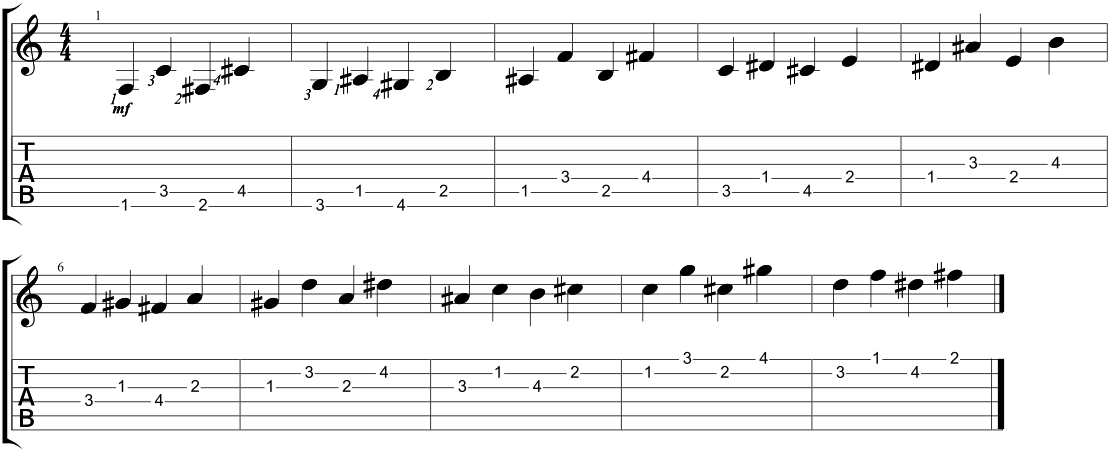
SPIDER EXERCISE #2

SPIDER EXERCISE #3
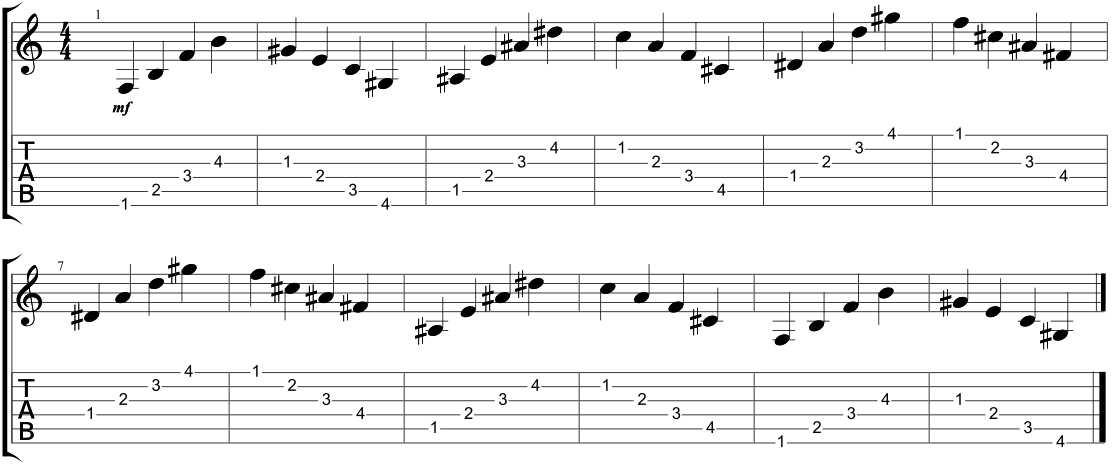
SPIDER EXERCISE #4
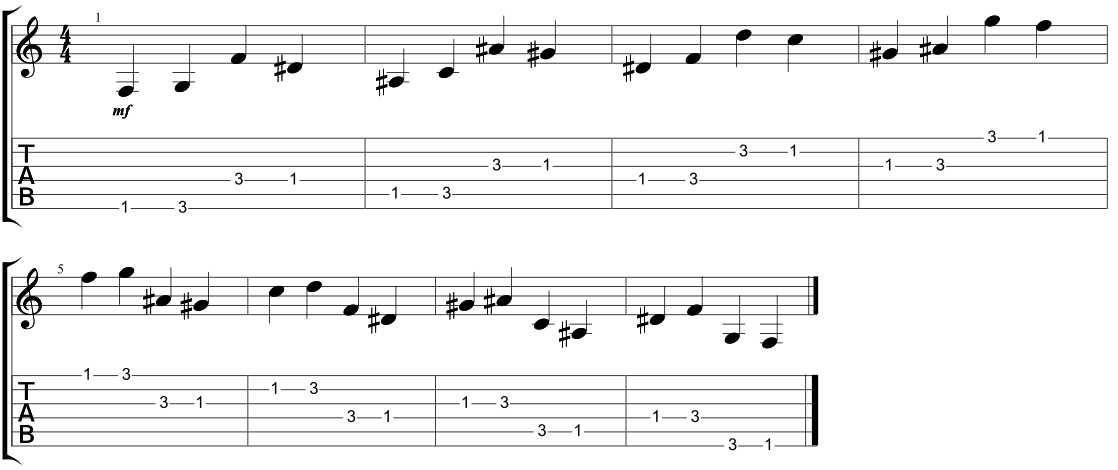
SPIDER EXERCISE #5
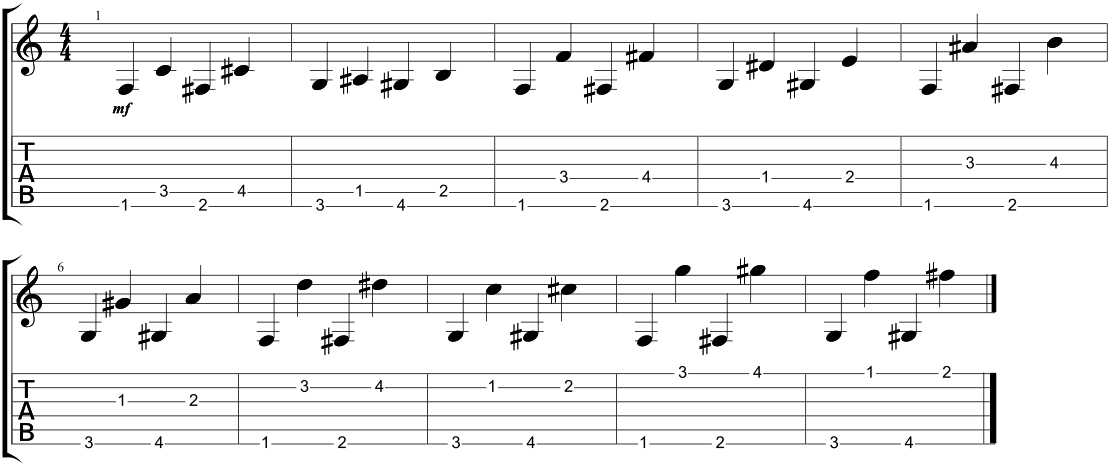
SPIDER EXERCISE #6

SPIDER EXERCISE #7
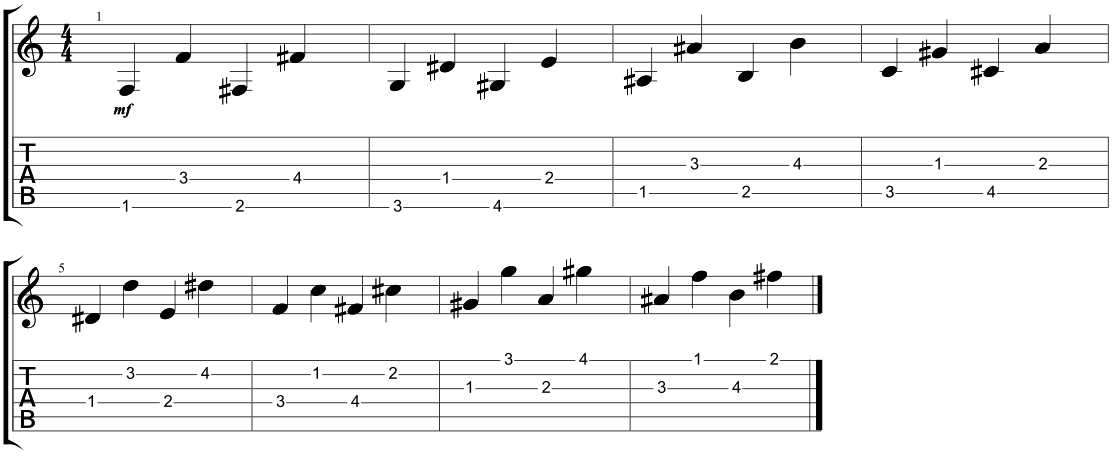
SPIDER EXERCISE #8

↧
Improve As A Guitarist | Guitar Classes & Lessons Koramangala Bangalore
How To Improve As A Guitarist
As there are no shortcuts to success in business, similarly there are no shortcuts to become a great guitarist. Every musician needs hours of practice with their instruments to be called the best in their chosen fields of specialty . Remember ‘Practice makes one perfect’. To become better with the guitar needs not only practice but also some skills in various processes like technique, tuning and the likes. Here are the seven major abilities to become better than before.
Playing the guitar can bring endless pleasure to the guitarist and to the listener. But you need to be really passionate and crazy about music and the guitar to really be the best at what you do and want to become. And whoever said you need to be born with the skill? You need to be born with just passion and that will take you are your music places.
As there are no shortcuts to success in business, similarly there are no shortcuts to become a great guitarist. Every musician needs hours of practice with their instruments to be called the best in their chosen fields of specialty . Remember ‘Practice makes one perfect’. To become better with the guitar needs not only practice but also some skills in various processes like technique, tuning and the likes. Here are the seven major abilities to become better than before.
- Technique: understanding the techniques of the guitar is what truly distinguishes a good guitarist from a great guitarist. Most people will try to copy the guitar sound to play tunes that sound right, rather than understand the technique behind these tunes. It is important to understand what technique truly is. It is not just tricks and tips of the guitar; it is a whole concept of knowledge that is vast and varied and can help the guitarist get better at his strumming. Having the right technique of the guitar is the foundation or the building block of the guitarist. Some important techniques that need to be picked up and mastered are picking, hammer-ons, pull-offs, vibrato and string bending. A guitarist without technique is like a teacher without passion. The music sounds dull and monotonous. Technique is what makes all the difference to a guitarist.
- Tuning: tuning is the most important thing for a guitarist. If a guitarist does not know how to tune his guitar or play in tune then he is not a good guitarist. The guitarist without the right tune or tuning will only end up sounding amateurish. Tuning can have the desirable effect according to the genre of music. If a punk or rock guitarist wants a particular rough effect to his tunes, he will tune his guitar accordingly. This can only be done when the guitarist is completely aware of tuning and tunes. It is not necessary that perfect tuning will lead to perfect pitch. Perfect pitch is very hard to come by and can be only achieved when the guitarist is completely in sync with his guitar and its sound. Tuning is not a skill that is acquired overnight. It takes time, patience and lots of practice to become perfect at tuning.
- Musicianship: most people who take up the guitar are those who have some natural talent or want to explore some inspiration. But remember that those who are naturally inclined towards music, or have inspiration should not mistake it for talent and avoid practicing. Each and every musician, be it a talented one or a natural one or an inspired musician needs to practice. You will see the best musicians, especially guitarists just practicing their tunes for hours on end. They do not have the attitude that because they are good they need to not practice. Infact it is the opposite, for them it is to get better that they practice. Musicianship is important for a guitarist and one that requires hours of practice for it to fully develop. Musicianship requires a fine balance between techniques, scales and chords. As an amateur guitarist you may think that you need inspiration before you hit the strings. This is not true. Ask any musician and he will tell you that to get inspiration you need to practice. Just keep playing the old tunes over and over again, trying to make them unique and the inspiration will hit you.
- Creativity: to be any kind of musician, be it a pianist or guitarist you need some degrees of creativity. Creativity is related to musicianship and practice. These cannot function without each other and are more often than not dependent on each other. Creativity is also about being flexible and is what makes people flexible. When you are creative you can do anything. How a guitarist reacts and adjusts to the unexpected is what makes him creative and what will get you to adjust anywhere and to anything. Especially in live performances when there are glitches or when one band member throws out the unexpected, these can be covered up by your creativity.
- Ear training: ear training as important to guitaring as tuning and technique is. Ear training helps bring other processes like creativity, technique, musicianship and confidence together for a guitarist. Ear training is considered by the best guitarists to be the most difficult skill to learn and perfect. You will notice that most rock guitarists have ear training down to the tee, as they start rock guitar by picking up tunes by the ear. Classical guitarists are the ones who play by technique more than they play by ear. The way to improve your aural skills is by listening to a lot of music, understanding patterns, chords and techniques applied in the particular piece of music. Transcribing songs, transcribing music and transcribing rhythm are great ways to improve ear training. A guitarist can also take trainings with an aural instructor to improve their untrained ear.
- Confidence: confidence and stage presence come naturally to those who are born leaders, and those who have perfect knowledge and techniques of the guitar. Once you know your techniques, tuning and aural skills perfectly, confidence is all yours. Ofcourse lets not forget those born charmers who exude charisma and personality are the ones who have the best stage presence, as they are the ones that are most confident in their skin and around people. The shyer ones need not be worried, as they practice and get better with technique and skill they will get more confident about playing in public and on stage.
- Practice and more practice: the only way a good guitarist can become a great guitarist is by endless hours of practice. Though the thought of practicing the guitar for hours can sound boring to some, but those who are really dedicated will understand the importance of practice. Techniques, tuning and ear training can be honed by hours of practice. Practicing for hours and hours everyday will ultimately pay off when you are standing on the stage and strumming along to your music and making the crowd sway, or when you are the lead guitarist with a rock band and making the crowd rock to your songs, you will be truly satisfied.
↧
5 Guitar Myths Busted | Guitar Classes Koramangala |Guitar Classes Bangalore
When the guitar bug hits you, one of the best things that you can do is buy a guitar, do some light research and slowly learn yourself. However, there's only so much that you can learn without also delving into music theory, the academic study of fundamentals like pitch, rhythm, harmony and form and how they are put into practice. Guitar theory is basically the same thing, only as it relates to guitar. Interestingly enough, you'll hear many players question the usefulness of guitar theory based on the following myths.
Myth #1: The Greats don't sit around studying Theory
While there are plenty of rockers who give off the impression that they've always been too busy guzzling Jack Daniels to learn music theory, the majority of these guitarists know a thing or two about the subject. Furthermore, the large majority of famous musicians worked very hard to get to where they are from both a playing and studying standpoint. So if you're avoiding a deeper understanding of playing the guitar because your idol supposedly didn't, just know that it's a facade.
Myth #2: Studying hampers Creativity
It's true that you need to strike a healthy balance between studying theory and actually playing a guitar. After all, nobody ever came to a show to watch Tom Morello read sheet music or Slash learn scales. But while these guys both might be really creative players who can improvise with the best of them, they, like all great guitarists, needed a base. So if you want to bust out truly inventive rifts, it definitely helps to study theory and learn how the basics apply to improvising.
Myth #3: I can just teach Myself Guitar
Again, it never hurts to grab a guitar and start playing when the urge strikes. But while this is perfectly okay for beginners, those who want to improve need to work some studying into the equation at some point. And while you can still become a decent player just by playing and teaching yourself, developing a strong knowledge of guitar theory will help you reach your goals much faster.
Myth #4: My Ear is All the Theory I need
All good music is created, but certain players think that they can just randomly create it through their own "trained" ear. The truth is, though, that unless you've really studied music, you don't have a trained ear. So the thought that you can produce audio gold by strumming the strings on a wing and a prayer, then you are trying to win the music lottery.
Myth# 5: My Instructor will tell me Everything
Hiring somebody to give you guitar lessons is a great step in the right direction. However, if you think that your instructor knows all, giving you the greenlight to avoid any theory study of your own, then you won't reach your full potential. Even if you have an instructor, be sure to put some of your own free time into the matter as well
Myth #1: The Greats don't sit around studying Theory
While there are plenty of rockers who give off the impression that they've always been too busy guzzling Jack Daniels to learn music theory, the majority of these guitarists know a thing or two about the subject. Furthermore, the large majority of famous musicians worked very hard to get to where they are from both a playing and studying standpoint. So if you're avoiding a deeper understanding of playing the guitar because your idol supposedly didn't, just know that it's a facade.
Myth #2: Studying hampers Creativity
It's true that you need to strike a healthy balance between studying theory and actually playing a guitar. After all, nobody ever came to a show to watch Tom Morello read sheet music or Slash learn scales. But while these guys both might be really creative players who can improvise with the best of them, they, like all great guitarists, needed a base. So if you want to bust out truly inventive rifts, it definitely helps to study theory and learn how the basics apply to improvising.
Myth #3: I can just teach Myself Guitar
Again, it never hurts to grab a guitar and start playing when the urge strikes. But while this is perfectly okay for beginners, those who want to improve need to work some studying into the equation at some point. And while you can still become a decent player just by playing and teaching yourself, developing a strong knowledge of guitar theory will help you reach your goals much faster.
Myth #4: My Ear is All the Theory I need
All good music is created, but certain players think that they can just randomly create it through their own "trained" ear. The truth is, though, that unless you've really studied music, you don't have a trained ear. So the thought that you can produce audio gold by strumming the strings on a wing and a prayer, then you are trying to win the music lottery.
Myth# 5: My Instructor will tell me Everything
Hiring somebody to give you guitar lessons is a great step in the right direction. However, if you think that your instructor knows all, giving you the greenlight to avoid any theory study of your own, then you won't reach your full potential. Even if you have an instructor, be sure to put some of your own free time into the matter as well
↧
↧
Tuning a Guitar |Guitar Classes Koramangala |Guitar Classes Bangalore
How to never go out of tune on the guitar
![]()
↧
Guitar Coils and PickUp's |Guitar Class Koramangala |Guitar Classes Bangalore
The Difference Between Single Coils and Humbuckers.
General knowledge.
Pickups are essentially magnets. Your strings are made of magnetic metals; usually electric guitar strings have a steel core wrapped in nickel, or are just plain steel. Your pickup creates a magnetic field that when the strings move, disturb. This disturbance is transferred to an electrical signal by your pickup, effected by all your guitar's electronics and eventually reaches your amp and is turned into vibrations which you hear as your guitar.
Pickups get their magnetism from either a magnet attached to their base, or from magnetic pole pieces. Pole pieces are the metal cylinders that come out of the pickup under each string. The pole pieces are wrapped in magnetic wire (usually copper), which increases the strength of the magnetic field. One set of pole pieces wrapped in copper wire is called a coil of a pickup.
There are 3 main types of magnets used in passive pickups; Alnico II (2), Alnico V (5), and Ceramic.
Alnico II is the lowest output and the smoothest/warmest/bassiest of the 3 main magnet types. Alnico V is higher output than Alnico II and has more trebly/midrange bite than Alnico II. Ceramic is the highest output of all and the most trebly/biting. In general, Either Alnico II or Alnico V can sound good distorted or clean, but ceramic pickups generally produce a tone that isn't as pleasing clean, but somewhat preferred for heavy distortion.
Depending on the type of wire used to wind the pickup, it's thickness, how it was prepared and how old it is, the wire can affect the pickup's overall sound greatly. Companies generally do not list information about what wire type they use in order to keep their pickup formula somewhat guarded. In general, the more wire that is used will give you a greater output and a bassier tone.
As you may have noticed, if you pick closer to the bridge of your guitar, the sound you get will be quieter and more trebly than it would be if you picked closer to the neck. When pickups were first made, they didn't account for this and your bridge pickup would sound very quiet and trebly, while your neck pickup would sound very loud and bassy. Eventually, people began to realize that if you over-wound the bridge pickup, so that it became hotter and more bassy, and under-wound the neck pickup, so that it became quieter and more trebly, that you could create a greater balance between the pickups. In general, bridge pickups will still sound more trebly than neck pickups, but not in all cases.
So, now that you have some general knowledge, we can move on to the pickup divisions.
There are 2 main different pickup constructions, single coil and humbucker (2 coils). Single coils and humbuckers come in all different sizes and shapes.
Here are some various single coil pickups.
http://www.seymourduncan.com/website/images/sp90-1.jpg
http://www.seymourduncan.com/website/images/STL-1.jpg
http://www.seymourduncan.com/website/images/sld-1.jpg
http://www.seymourduncan.com/website/images/ssl-2.jpg
http://www.seymourduncan.com/website/images/sp90-1.jpg
http://www.seymourduncan.com/website/images/STL-1.jpg
http://www.seymourduncan.com/website/images/sld-1.jpg
http://www.seymourduncan.com/website/images/ssl-2.jpg
Here are some various humbuckers.
http://www.seymourduncan.com/website/images/SHR-1b.jpg
http://www.seymourduncan.com/website/images/ST59-1.jpg
http://www.seymourduncan.com/website/images/APH-1.jpg
http://www.seymourduncan.com/website/images/SHR-1b.jpg
http://www.seymourduncan.com/website/images/ST59-1.jpg
http://www.seymourduncan.com/website/images/APH-1.jpg
Hopefully you know, visually, the difference between humbuckers and single coils now.
The first pickups created were single coils. Along with picking up signals from your strings, which they were supposed to, they also picked up stray radio frequencies (RF) which you would hear through your amp as an annoying buzzing sound. The orientation of this RF signal is related to which way the wire is wound around your pickup. Meaning that if you wind the pickup clockwise, the RF signal will travel in a different way then it would if you wound the pickup counter-clockwise. If you have 2 signals being used at once, where the RF signal is different in each, they will cancel each other out, or at least lessen their collective sound greatly.
This is why humbuckers were created.
Humbuckers are essentially 2 single coil pickups that share a large magnet at their base. Each coil of a humbucker is wrapped differently, so that the RF signals they create cancel each other out.
The only purpose in creating humbuckers was to "buck" the hum that single coils created.
However humbuckers did not, and do not, sound just like single coils without hum. Since a much larger magnet was used, and there were 2 coils of wire, the humbucker created a much louder signal.
There are many other differences between humbuckers and single coils. Some will say that humbuckers are only good for distortion and single coils only good for clean. This is only personal taste, and many people (There are too many people who use Gibson style guitars for clean to begin to list them) use guitars with humbuckers for playing clean. Also, guitarists such as Ritchie Blackmore (Deep Purple), Tony Iommi (Black Sabbath), Kirk Hammet (Metallica), both of Iron Maiden's guitarists and many others have used single coils for metal.
I could begin to describe the tonal differences of humbuckers and single coils to you, but it would be best if you went out and played alot of guitars and found them out for yourself. I could say single coils have more "quack" or "twang", but what you think of as quack may be different than what I think of, so it'd be best you come to your own conclusions.
These links have clips of many different pickups, use them to help you make decisions about pickups
www.toneninja.net
http://www.soundclick.com/pro/?BandID=112334
http://artists.iuma.com/IUMA/Bands/Forum_Music
http://seymourduncan.com/forum/forumdisplay.php?s=&daysprune=&forumid=5
www.toneninja.net
http://www.soundclick.com/pro/?BandID=112334
http://artists.iuma.com/IUMA/Bands/Forum_Music
http://seymourduncan.com/forum/forumdisplay.php?s=&daysprune=&forumid=5
The Difference Between Active and Passive Pickups
Pickups in general
http://mywebpages.comcast.net/skgs/sk/pickup_factors.htm
Go to that website for information about factors affecting how a pickup sounds.
Go to that website for information about factors affecting how a pickup sounds.
Potentiometers are the technical names for your controls. The lower their value, the more high end they cut off. So a 500k pot will sound more trebly than a 250k pot, and a 100k pot will sound more trebly than a 25k pot.
Passive Pickups
Passive pickups were the first kind of pickups. They generate a signal which is powerful enough to drive an amp and loud enough to be used without any pre-amplification. They have many more winds of wire than active pickups and much stronger magnets. They are more prone (but won?t necessarily have) to having microphonic feedback. Microphonic feedback in your pickup is when there is too much vibration in the coils of your pickup and you get that annoying squealing sound, though some like it. Since passive pickups have more wire, there?s more of a chance of there being an error somewhere and something being microphonic. Also the stronger magnetic field increases chances of being microphonic as well. Passive pickups generally use potentiometer values of above 250, and sometimes don?t have potentiometers.
Active Pickups
Active pickups on their own are much weaker than passive pickups. They have a much weaker magnet and much fewer coil windings, which means their signal is very trebly and very low output on their own. They have built in pre-amps (which is what the battery is for), which brings their output level to one similar to, and in many cases greater than those of passive pickups. They use much lower value potentiometers because the signal is so trebly and a lot of the high end needs to be cut off to be usable. Active Pickups use pot values usually below 250k; anything too great will give a signal that is far too trebly and basically useless.
Each has their pros and cons. The main argument for passive pickups is that they sound more genuine and that you don?t have to change all your electronics to change between passive pickups, since most guitars use passive pickups to begin with. The main argument for active pickups is that they don?t have feedback, sound more hi-fi and the tone isn?t altered much with the volume controls. The main argument against passive pickups is that they're microphonic and pull too hard on the strings, reducing sustain. The main argument against active pickups is that they sound sterile.
Neither is by default better than the other, and plenty of artists in most any genre will use either type, though passive is more common.
More Details can be found @ the link here :Pickups
↧
Guitar Habits To Make You a Better Guitarist |Guitar Classes Koramangala
Like the headline says, here are seven habits — habits you'll need to get into — that will, simply put, make you a better guitarist.
01. Visualize: You don’t just have to practice when there’s a guitar in your hands. There’s plenty of time in the day being wasted that you can use to improve your playing. Whenever you have a spare few seconds to daydream or are zoning out in class or at a meeting or waiting in line at the DMV, etc., use the time to go inside your mind’s eye and ears and visualize yourself perfectly executing the lick, riff or song you’ve been working on.
See and hear yourself playing the part with an expert ease, gliding as one with the strings, “virtually” feeling your fingers and your pick in precise synchronization. Repeat this whenever you can and you’ll find you’re better than you were before the last time you picked up the guitar and that the experience of the real guitar in your hands is enriched for the process.
An added bonus of this is that when you get better at connecting the disparate experiences of the imagined and the real, you’ll find that the accuracy of translating what you hear in your head through your fingers to the fretboard will significantly improve, as will your ability to transcribe things you hear while away from your guitar (if nothing else, you’ll be floored at how realistic your air guitar playing will be!).
02. Learn Something New Every Day: This is one of the easiest things you can do to enrich your guitar playing, musicianship and, most importantly, your discipline and motivation. Simply put, find one guitar-related thing a day that you didn’t know already and learn it. And play it. It can be a riff, a lick, a chord, a scale, an exercise, a song, a melody, an altered tuning, a strum pattern, the part of a song you know all of the cool riffs of but never bothered to learn the “boring” connecting transition sections of, whatever.
The discipline of seeking out, playing and internalizing a new piece of guitar knowledge on a daily basis will feed your subconscious musical instincts, add new concepts to your muscle memory and ultimately aid in your ability to express yourself and perform effortlessly on the guitar.
Make this a part of your day and you’ll find that as you continue on your journey, one thing will become two, then three, and on and on until you are devouring as much as you can absorb on the guitar, every day!
03. Jam! While it’s awesome to have perfected that ripping 128th note shredfest in your bedroom or basement, perhaps the most important thing for a guitarist to do is to play along with or to some sort of accompaniment.
Obviously, playing with another live musician or group of musicians in the same room is the perfect situation (And you should put yourself in those situations as often as possible), but there are many alternatives that can be just as beneficial. Today we have innumerable options, such as virtual backing bands and tracks through the Internet, computer programs such as EZ Drummer (highly recommended for its ease of use and versatility) or Garageband loops, plus apps on our phones that can act as stable backdrops against which we can hone our performance skills.
Playing with accompaniment such as this will greatly improve your consistency, your endurance, your improvisational ability and your feel for locking into a groove.
As another fun and educational option, jam along with your favorite songs. You can play along with the song note-for-note as written and improve your chops by executing the nuances and fitting in seamlessly with the rhythm, or you can use the track as a launch pad for exercising your improvisational muscles and integrating the licks you have been practicing. Play along with songs outside of your comfort zone of style or technicality to gain further benefits from this. Jamming along with TV, commercials or movie soundtracks while you’re relaxing with a guitar in your hands can be fun and rewarding.
04. Record Yourself: There is no better way to see your guitar playing objectively and to motivate yourself to work to become a better player than to record yourself. There are countless affordable media for recording yourself on your own, and when you record, you can listen to yourself with fresh ears and hear the things you like and dislike about your playing. You’ll find it’s infinitely easier to pinpoint your strengths and weaknesses and focus your practice accordingly.
Record yourself playing rhythm and then record other complimentary parts such as leads, melodies, counterpoints and complimentary alternate rhythms and you’ll learn about composition, production and ensemble performance. When you begin to focus on these complimentary parts, you’ll find that your vision and scope expands, as do your goals, and as you work to create complete songs, your abilities grow exponentially while you work to write and perform to the best of your ability.
The other benefit of recording yourself is that you will consistently maintain a record of your growth as a player. The journey of a guitarist is always (or should be) one of constant growth, and recording yourself is an awesome way to measure how far you have come.
Take Lessons: As a guitar instructor by trade, I am clearly biased, but the most obvious and productive thing any guitarist can do to improve their playing is to take lessons. While there is an ever-expanding universe of Internet resources, books, instructional videos, etc., available, nothing can compare to the one-on-one interaction with the expertise of a skilled guitar teacher. A teacher will identify your strengths and weaknesses, sharpening your skills and eliminating your flaws. A good teacher also will help you save time in your development by helping you sift through all of the information out there and lead you on the right path toward quickly realizing your goals as a guitarist.
Guitar teachers get paid to make you better, and spending the money will make you take your study seriously. Every story of a “self taught” guitarist still involves some part where they learned a lot from someone they knew who was more proficient and knowledgeable than them who helped shape their development, and even the extremely educated and virtuosic Randy Rhoads (who was a guitar teacher himself) was known to seek out guitar teachers whenever he had available time while making history touring and recording with Ozzy Osbourne, so break out of your rut, accelerate the evolution of your playing to the next level and get some lessons!
06. Focus your practice time: We’ve all heard stories of guitarists with marathon 12-hour or daily three-hour practice sessions, but for most guitarists, a tight, focused 10 to 30 minutes of consistent daily practice will prove more efficient. There is a difference in “practice” and “playing” time, and oftentimes the two get confused.
Practice should involve (after warming up) maintenance exercises to keep up your chops and emphasize your strengths, and focused work on specific goals that deal with integrating new knowledge and technique. Keeping the time spent on practice to an intelligent minimum, breaking up the topics to be addressed into small chunks, will help avoid wasted effort and will leave time to play.
In an ideal world, we’d all have three to six or more solid hours each day to spend with a guitar in hand, but for most of you reading this, the time you have available is substantially less. Oftentimes, setting out to practice for an extended period of time becomes a chore for some, and then the practice gets put off if something else comes up. Planning for at least 10 minutes of consistent daily practice time isn’t much of a chore for anyone, and if you get into the habit, you’ll find that you find ways to make more time to practice more.
Break up your practice regimen into skill sets and techniques, practice them daily, and then use them more efficiently when you’re playing. Let a guitar teacher mentor you through the process of designing a suitable practice routine for your schedule, or do your best assessing yourself and create your own. They key is consistency and brief, yet physically and mentally intense sessions.
Twenty minutes every day of truly focused practice is tremendously more conducive to development than a two-hour session every once in a while. And if you keep up with a reasonable, steady schedule, you’ll find that those occasions when you have time for an all-day practice session are all the more fruitful for it.
More importantly, keeping a consistent, intense practice regimen will leave all of your other free “guitar time” available for jamming, improvising, recording and experimenting, all of the while being able to do so with your skills at the highest possible level.
07. Track Your Progress The growth of any guitarist can be greatly improved by the simple awareness of the development of that growth. As you develop the discipline to be learning and practicing on a daily basis, it is extremely important to keep a log or diary of the process of your improvement in order to further maximize growth. The easiest way to do this is to keep a consistent log of your daily routine.
While this may seem a bit obsessive, you’ll find that keeping track of your daily practice will help you focus future practice sessions, maintain and continue awareness of steady progress, and also locate particularly fruitful practice phases in your past that can be replicated and upgraded when you feel your growth has stalled.
01. Visualize: You don’t just have to practice when there’s a guitar in your hands. There’s plenty of time in the day being wasted that you can use to improve your playing. Whenever you have a spare few seconds to daydream or are zoning out in class or at a meeting or waiting in line at the DMV, etc., use the time to go inside your mind’s eye and ears and visualize yourself perfectly executing the lick, riff or song you’ve been working on.
See and hear yourself playing the part with an expert ease, gliding as one with the strings, “virtually” feeling your fingers and your pick in precise synchronization. Repeat this whenever you can and you’ll find you’re better than you were before the last time you picked up the guitar and that the experience of the real guitar in your hands is enriched for the process.
An added bonus of this is that when you get better at connecting the disparate experiences of the imagined and the real, you’ll find that the accuracy of translating what you hear in your head through your fingers to the fretboard will significantly improve, as will your ability to transcribe things you hear while away from your guitar (if nothing else, you’ll be floored at how realistic your air guitar playing will be!).
02. Learn Something New Every Day: This is one of the easiest things you can do to enrich your guitar playing, musicianship and, most importantly, your discipline and motivation. Simply put, find one guitar-related thing a day that you didn’t know already and learn it. And play it. It can be a riff, a lick, a chord, a scale, an exercise, a song, a melody, an altered tuning, a strum pattern, the part of a song you know all of the cool riffs of but never bothered to learn the “boring” connecting transition sections of, whatever.
The discipline of seeking out, playing and internalizing a new piece of guitar knowledge on a daily basis will feed your subconscious musical instincts, add new concepts to your muscle memory and ultimately aid in your ability to express yourself and perform effortlessly on the guitar.
Make this a part of your day and you’ll find that as you continue on your journey, one thing will become two, then three, and on and on until you are devouring as much as you can absorb on the guitar, every day!
03. Jam! While it’s awesome to have perfected that ripping 128th note shredfest in your bedroom or basement, perhaps the most important thing for a guitarist to do is to play along with or to some sort of accompaniment.
Obviously, playing with another live musician or group of musicians in the same room is the perfect situation (And you should put yourself in those situations as often as possible), but there are many alternatives that can be just as beneficial. Today we have innumerable options, such as virtual backing bands and tracks through the Internet, computer programs such as EZ Drummer (highly recommended for its ease of use and versatility) or Garageband loops, plus apps on our phones that can act as stable backdrops against which we can hone our performance skills.
Playing with accompaniment such as this will greatly improve your consistency, your endurance, your improvisational ability and your feel for locking into a groove.
As another fun and educational option, jam along with your favorite songs. You can play along with the song note-for-note as written and improve your chops by executing the nuances and fitting in seamlessly with the rhythm, or you can use the track as a launch pad for exercising your improvisational muscles and integrating the licks you have been practicing. Play along with songs outside of your comfort zone of style or technicality to gain further benefits from this. Jamming along with TV, commercials or movie soundtracks while you’re relaxing with a guitar in your hands can be fun and rewarding.
04. Record Yourself: There is no better way to see your guitar playing objectively and to motivate yourself to work to become a better player than to record yourself. There are countless affordable media for recording yourself on your own, and when you record, you can listen to yourself with fresh ears and hear the things you like and dislike about your playing. You’ll find it’s infinitely easier to pinpoint your strengths and weaknesses and focus your practice accordingly.
Record yourself playing rhythm and then record other complimentary parts such as leads, melodies, counterpoints and complimentary alternate rhythms and you’ll learn about composition, production and ensemble performance. When you begin to focus on these complimentary parts, you’ll find that your vision and scope expands, as do your goals, and as you work to create complete songs, your abilities grow exponentially while you work to write and perform to the best of your ability.
The other benefit of recording yourself is that you will consistently maintain a record of your growth as a player. The journey of a guitarist is always (or should be) one of constant growth, and recording yourself is an awesome way to measure how far you have come.
Take Lessons: As a guitar instructor by trade, I am clearly biased, but the most obvious and productive thing any guitarist can do to improve their playing is to take lessons. While there is an ever-expanding universe of Internet resources, books, instructional videos, etc., available, nothing can compare to the one-on-one interaction with the expertise of a skilled guitar teacher. A teacher will identify your strengths and weaknesses, sharpening your skills and eliminating your flaws. A good teacher also will help you save time in your development by helping you sift through all of the information out there and lead you on the right path toward quickly realizing your goals as a guitarist.
Guitar teachers get paid to make you better, and spending the money will make you take your study seriously. Every story of a “self taught” guitarist still involves some part where they learned a lot from someone they knew who was more proficient and knowledgeable than them who helped shape their development, and even the extremely educated and virtuosic Randy Rhoads (who was a guitar teacher himself) was known to seek out guitar teachers whenever he had available time while making history touring and recording with Ozzy Osbourne, so break out of your rut, accelerate the evolution of your playing to the next level and get some lessons!
06. Focus your practice time: We’ve all heard stories of guitarists with marathon 12-hour or daily three-hour practice sessions, but for most guitarists, a tight, focused 10 to 30 minutes of consistent daily practice will prove more efficient. There is a difference in “practice” and “playing” time, and oftentimes the two get confused.
Practice should involve (after warming up) maintenance exercises to keep up your chops and emphasize your strengths, and focused work on specific goals that deal with integrating new knowledge and technique. Keeping the time spent on practice to an intelligent minimum, breaking up the topics to be addressed into small chunks, will help avoid wasted effort and will leave time to play.
In an ideal world, we’d all have three to six or more solid hours each day to spend with a guitar in hand, but for most of you reading this, the time you have available is substantially less. Oftentimes, setting out to practice for an extended period of time becomes a chore for some, and then the practice gets put off if something else comes up. Planning for at least 10 minutes of consistent daily practice time isn’t much of a chore for anyone, and if you get into the habit, you’ll find that you find ways to make more time to practice more.
Break up your practice regimen into skill sets and techniques, practice them daily, and then use them more efficiently when you’re playing. Let a guitar teacher mentor you through the process of designing a suitable practice routine for your schedule, or do your best assessing yourself and create your own. They key is consistency and brief, yet physically and mentally intense sessions.
Twenty minutes every day of truly focused practice is tremendously more conducive to development than a two-hour session every once in a while. And if you keep up with a reasonable, steady schedule, you’ll find that those occasions when you have time for an all-day practice session are all the more fruitful for it.
More importantly, keeping a consistent, intense practice regimen will leave all of your other free “guitar time” available for jamming, improvising, recording and experimenting, all of the while being able to do so with your skills at the highest possible level.
07. Track Your Progress The growth of any guitarist can be greatly improved by the simple awareness of the development of that growth. As you develop the discipline to be learning and practicing on a daily basis, it is extremely important to keep a log or diary of the process of your improvement in order to further maximize growth. The easiest way to do this is to keep a consistent log of your daily routine.
While this may seem a bit obsessive, you’ll find that keeping track of your daily practice will help you focus future practice sessions, maintain and continue awareness of steady progress, and also locate particularly fruitful practice phases in your past that can be replicated and upgraded when you feel your growth has stalled.
↧


















